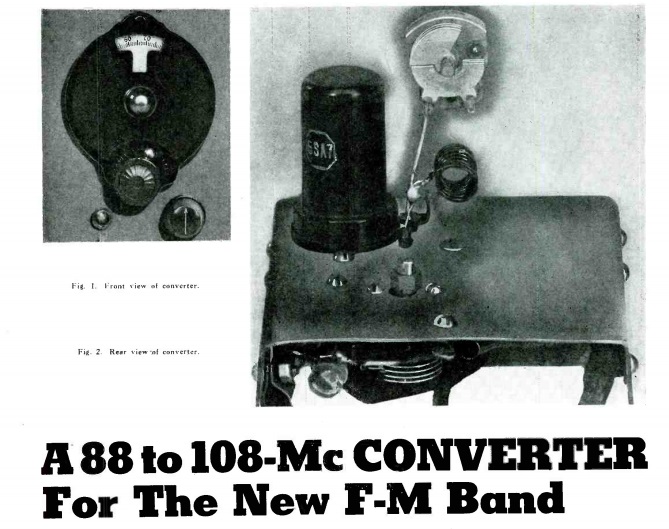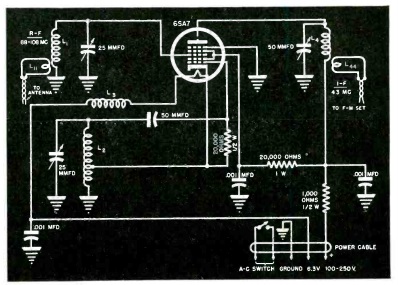After the War, the FCC moved the FM band from its old home at 42-49 MHz to its current position at 88-108 MHz. This shift delayed the popularity of FM broadcasting, since all prewar FM receivers were rendered obsolete. For the serviceman dealing with frustrated owners of prewar FM sets, one possibility was examined in the August 1946 issue of Service magazine.
The magazine contained the plans for the converter shown here, which would allow owners of the prewar sets to listen to the stations appearing on the new FM band. For simplicity, the converter had its own tuning dial, and the old receiver was left on 43 MHz. The converter consisted of an oscillator containing a single 6SA7. The author noted that this tube wouldn’t function at 100 MHz, but it worked in this circuit since it was merely oscillating at 45-65 MHz, well within its published specifications. By tuning this local oscillator, the result was an IF of 43 MHz, which would be picked up by the old set.
In addition to construction details, some discussion was given to antennas for the new band. The author noted that in most cases, an outdoor antenna consisting of brass, copper, or aluminum tubing about 4-1/2 feet long would suffice. This was mounted outside, horizontally, and fed at the center with twisted pair. For locations with strong signals, an indoor antenna, perhaps an existing curtain rod, would suffice.
Click Here For Today’s Ripley’s Believe It Or Not Cartoon
![]()



Pingback: 1947 FM Converter | OneTubeRadio.com